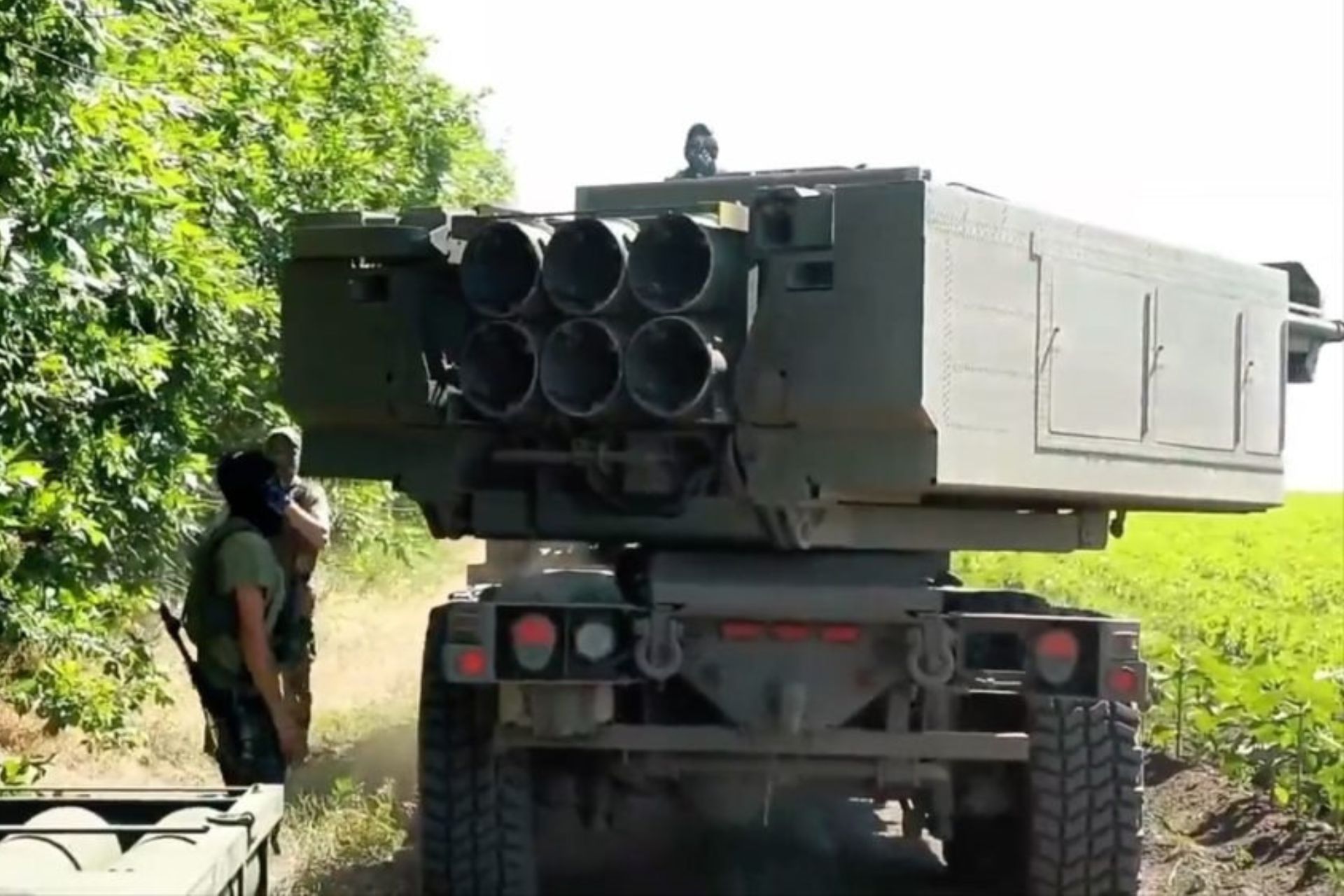Breaking News
US Intelligence Reveals Russia Relocates 90% of Its Aircraft to Avoid Ukrainian ATACMS.
A recent US intelligence assessment reported by The Wall Street Journal reveals that Russia has relocated 90% of its military aircraft to bases out of range of the US-supplied Army Tactical Missile Systems (ATACMS) that Ukraine began receiving earlier this year. This strategic move by Russia aims to mitigate the growing threat posed by Ukraine's ability to strike deep into Russian-occupied territories using these long-range missiles.
Follow Army Recognition on Google News at this link

Depending on the variant, the ATACMS has a range between 160 and 300 kilometers and can be launched from platforms like the M270 MLRS and the M142 HIMARS (Picture source: Ukrainian Forces)
An anonymous US official mentioned that the Biden administration has no intention of altering its current policy, which restricts Ukraine from using US-provided weapons to target deep within Russian territory. Despite Kyiv's calls to lift this restriction, especially after a recent large-scale Russian attack, the official noted that such strikes would likely have minimal strategic impact at this stage.
The official also indicated that Ukraine might achieve greater success by continuing to use domestically produced drones, which have been effectively employed in recent months to strike targets in Russia. Although the US has ramped up ATACMS production, stock levels remain limited, and the Pentagon has only a restricted number available for Ukraine.
The ATACMS is a short-range tactical ballistic missile system designed for precision strikes on high-value targets like enemy command centers, air defense systems, and critical infrastructure. Depending on the variant, it has a range between 160 and 300 kilometers and can be launched from platforms like the M270 MLRS and the M142 HIMARS. These missiles use a combination of GPS and inertial navigation systems to ensure highly accurate targeting, minimizing collateral damage.
Recently, the US confirmed the delivery of ATACMS to Ukraine. Although specific numbers haven't been disclosed, reports suggest that these missiles have already been used by Ukrainian forces to target Russian military installations. This decision marks a significant escalation in military aid, enabling Ukraine to strike deep into Russian-controlled territory, including airfields and logistical hubs.
While Ukraine has long sought these missiles, their deployment is expected to bolster its ongoing counteroffensive efforts. Despite these developments, US officials continue to emphasize restrictions on using these missiles against targets deep within Russian territory, reflecting ongoing concerns about escalating the conflict further.

The ISW report notes that at least 245 Russian military targets are within ATACMS range, of which only 16 (6.5%) are airbases (Picture source: ISW)
According to the Institute for the Study of War (ISW), hundreds of Russian military and paramilitary targets are within range of Ukrainian ATACMS. However, US-imposed restrictions limit Ukraine's ability to strike these critical military infrastructures. Although Russia has relocated 90% of its combat aircraft away from bases within ATACMS range, allowing Ukraine to use these missiles against other military targets in Russia remains crucial.
The ISW report notes that at least 245 Russian military targets are within ATACMS range, of which only 16 (6.5%) are airbases. The limited number of ATACMS provided to Ukraine does not diminish the importance of lifting these restrictions, as these missiles could still significantly impact Russian operations. The report also mentions that Ukraine is preparing a list of military targets in Russia it could strike if US restrictions were lifted.
It is unlikely that Russia has redeployed all military assets away from the identified targets, and such a logistical overhaul would significantly strain Russian operations. Therefore, the argument that the limited redeployment of Russian aircraft makes lifting ATACMS restrictions unnecessary is considered incomplete by ISW.
This intelligence assessment highlights the challenges Ukraine faces in protecting its territory with limited air defense systems and interceptors, as demonstrated by recent Russian missile barrages. As Ukraine continues to develop and deploy its own long-range drones, the conflict dynamics may shift, but the US remains cautious about expanding its involvement.
Russia's relocation of aircraft comes amid growing tensions, with the country launching its largest aerial attacks since the invasion began. Over 200 missiles and drones were deployed in a massive strike on Ukrainian cities, further straining Ukraine's defenses.
Meanwhile, Ukrainian forces have begun deploying US-supplied F-16 fighter jets, marking a significant development in the ongoing conflict. However, as the situation evolves, both sides continue to adapt their strategies in this prolonged and complex war.


























